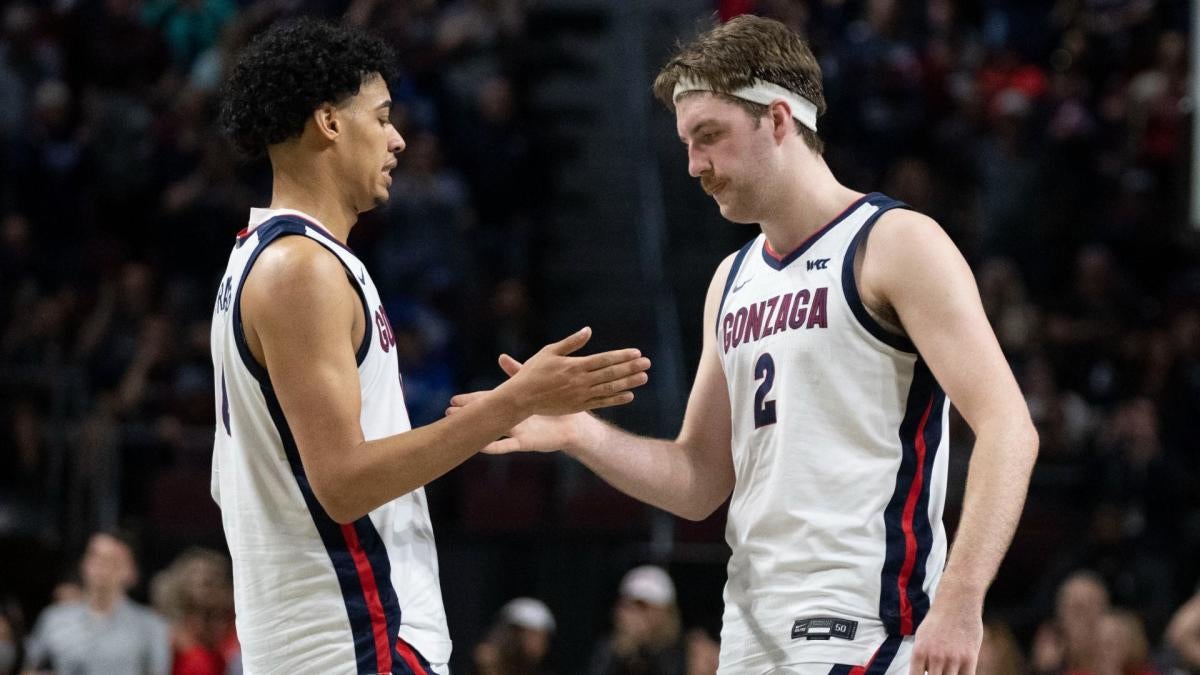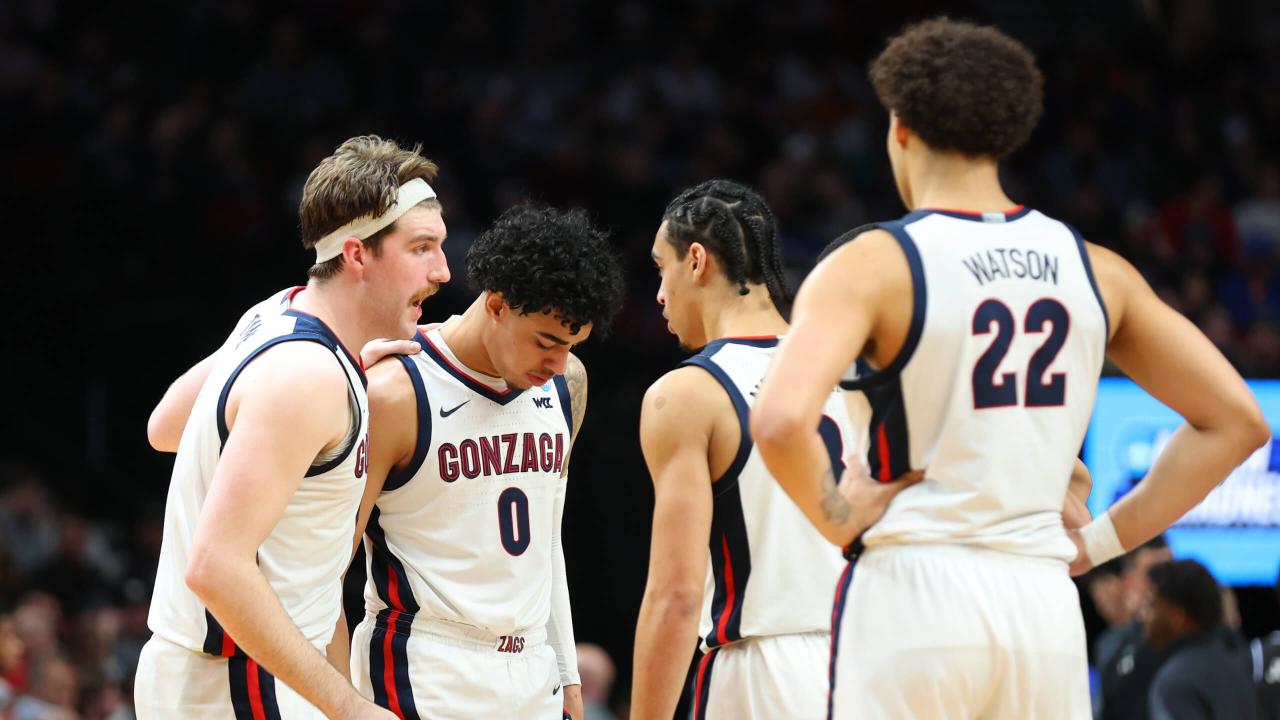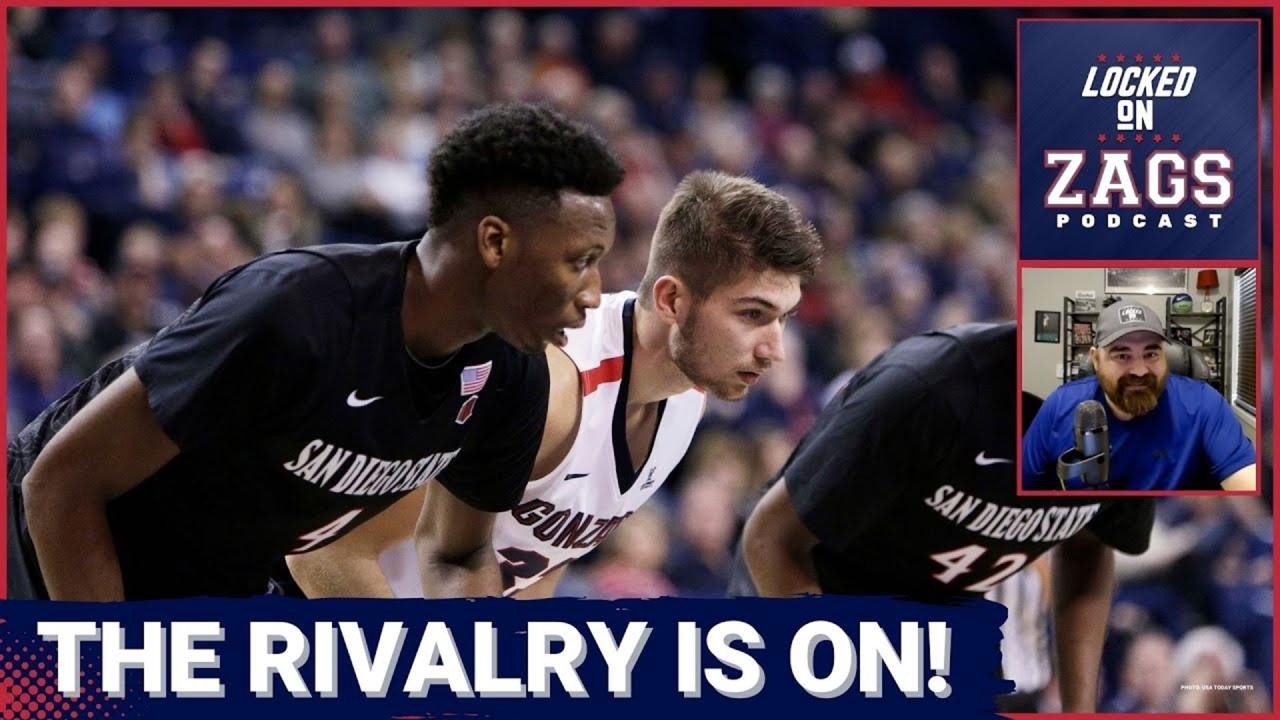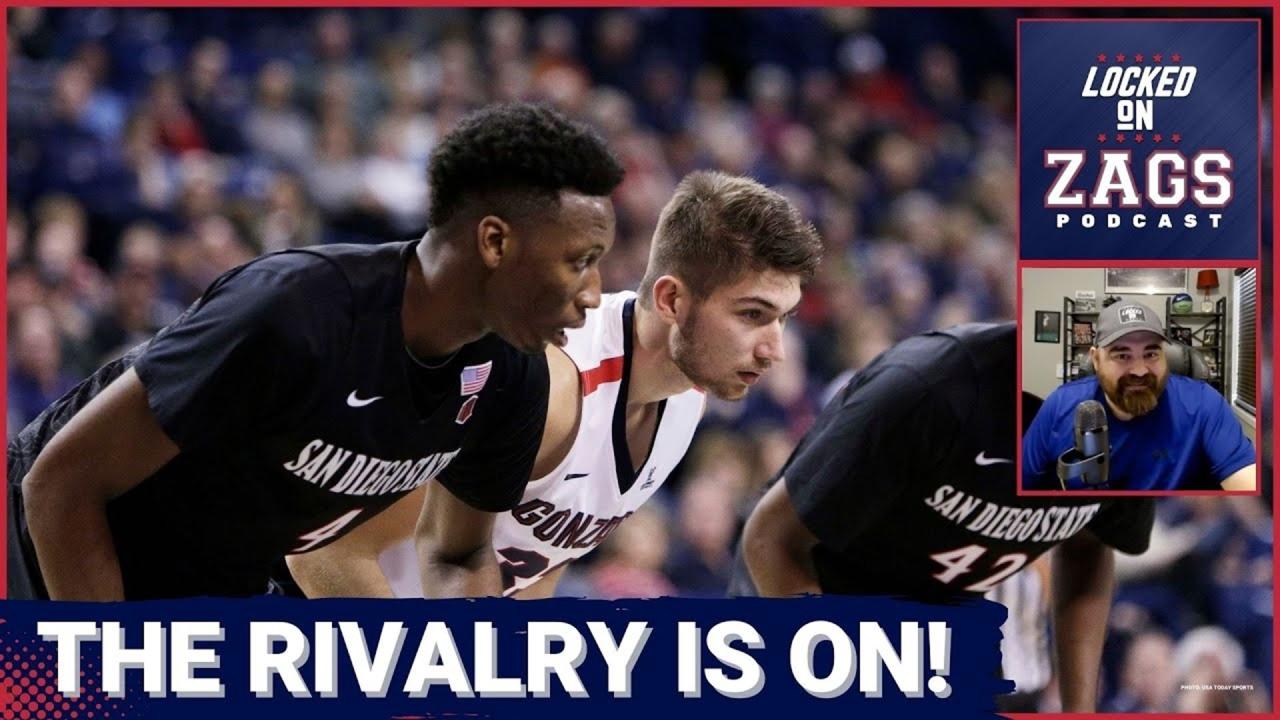Gonzaga basketball plane travel isn’t just about getting the team from point A to point B; it’s a fascinating microcosm of the program’s operations, finances, and public image. This exploration delves into the history of the team’s air travel, examining the economic considerations, safety protocols, media portrayals, and even the environmental impact of their flights. We’ll look at the different aircraft used, the logistical challenges involved, and the public’s reaction to the team’s travel arrangements.
Get ready for a detailed look behind the scenes.
From the initial flight charters to the current practices, we’ll trace the evolution of Gonzaga’s air travel, analyzing the costs involved, comparing them to commercial options, and discussing the funding sources. We’ll also consider the safety measures in place and how the team manages the logistical complexities of transporting players, coaches, and equipment across the country and beyond. We’ll even touch upon the environmental concerns related to air travel and explore potential solutions for a more sustainable approach.
Gonzaga Basketball Team Travel History
Gonzaga University’s men’s basketball team’s success has necessitated extensive travel, and their reliance on private chartered flights has become a notable aspect of their program. This section details the team’s travel history, outlining significant flights, frequent destinations, and the types of aircraft utilized.
Historical Use of Private Chartered Flights

Gonzaga’s consistent use of chartered flights for its men’s basketball team dates back several years, becoming more prevalent as the team’s national profile and tournament success increased. This method of travel allows for greater flexibility in scheduling, enhanced comfort for players and staff, and optimized logistical management compared to commercial flights. The exact start date of consistent chartered flight usage isn’t publicly documented, but it’s safe to say it became a standard practice as the team’s prominence grew in the late 1990s and early 2000s.
Timeline of Significant Travel Events
Tracking every flight would be exhaustive, but key moments include trips to major tournaments like the NCAA Tournament, where efficient travel is paramount. Flights to and from games in distant locations such as Hawaii or the East Coast are also significant travel events. While specific dates and flight details aren’t readily available publicly, reaching the Final Four in 2021 certainly involved extensive air travel.
Frequently Visited Destinations
Frequent destinations often include major cities hosting NCAA tournament games, West Coast conference opponents’ locations, and occasional high-profile non-conference matchups. Patterns show a concentration of flights to cities with major airports capable of handling larger aircraft, reflecting the team’s size and logistical needs. The West Coast naturally features heavily, with frequent trips to California, Oregon, and Washington, along with regular travel to the East Coast for high-profile matchups.
Aircraft Used for Team Travel
| Year | Aircraft Type | Destination(s) | Notable Events |
|---|---|---|---|
| 2021 | Boeing 737 (example) | Indianapolis (Final Four), various West Coast locations | Successful run to the NCAA Championship game |
| 2023 | Embraer ERJ 145 (example) | Various West Coast conference games, Las Vegas | Regular season travel |
| 2022 | Private Jet (various models) | Various locations across the US | Regular season and tournament travel |
| 2017 | Boeing 737 (example) | Various tournament locations | Deep run in the NCAA tournament |
Economic Aspects of Gonzaga Basketball Air Travel
The financial implications of Gonzaga’s air travel are substantial. This section explores the estimated costs, funding sources, and cost-effectiveness compared to commercial airlines.
Estimated Costs of Chartered Flights
The cost of chartering planes for a college basketball team varies widely depending on the aircraft size, distance, and time of year. A rough estimate for a single charter flight could range from tens of thousands to hundreds of thousands of dollars, depending on the factors mentioned. The cost per season is therefore quite significant.
Sources of Funding
Funding likely comes from a combination of sources. The university’s athletic budget contributes significantly, with potential additional support from sponsorships, alumni donations, and revenue generated by the basketball program itself. Successful seasons, with their associated media attention and merchandise sales, can bolster the financial capacity to support these travel expenses.
Cost-Effectiveness Compared to Commercial Airlines
While chartering planes is undeniably more expensive than using commercial flights, the benefits—including convenience, team cohesion, and reduced travel time—often outweigh the higher costs, especially for a team with a demanding travel schedule and the need for efficient logistics. The potential loss of revenue from player fatigue or missed practice time associated with commercial travel needs to be factored into the overall cost-benefit analysis.
Hypothetical Budget Breakdown
A hypothetical budget for a season’s air travel might include: $X for aircraft charter, $Y for ground transportation to and from airports, $Z for player and staff meals during travel, and $W for miscellaneous expenses (e.g., potential flight delays). The exact figures would depend heavily on the number of games, destinations, and specific flight details. Such a breakdown would require detailed accounting data from Gonzaga’s athletic department, which isn’t publicly accessible.
Safety and Logistics of Gonzaga Basketball Flights
Ensuring the safety and efficient logistical management of the team’s travel is paramount. This section examines potential safety concerns, logistical planning, and passenger/baggage handling.
Potential Safety Concerns
Potential safety concerns include those inherent to all air travel: mechanical malfunctions, weather-related disruptions, and human error. However, utilizing reputable charter companies with well-maintained aircraft and experienced pilots significantly mitigates these risks. Regular safety checks and adherence to all aviation regulations are critical.
Logistical Planning
Logistical planning involves coordinating flight schedules with game times, arranging ground transportation, managing player and staff accommodations, and handling potential unforeseen circumstances. This requires meticulous coordination between the athletic department, the charter company, and various other support staff.
Passenger and Baggage Handling
Passenger and baggage handling procedures typically involve designated personnel to oversee the boarding and disembarkation process, ensuring all players, coaches, and staff arrive safely and efficiently. Baggage is typically handled by the charter company or designated personnel, with careful tracking and security measures in place to prevent loss or damage.
Workflow from Flight Booking to Arrival
The process generally starts with flight scheduling, followed by aircraft selection and contract negotiation with the charter company. Next comes passenger list confirmation, baggage handling arrangements, and final flight confirmation. Post-flight, the process includes ground transportation coordination and post-flight debriefing to assess the overall efficiency and identify areas for improvement.
Public Perception and Media Coverage
The use of private chartered flights by Gonzaga’s basketball team has garnered media attention. This section explores media portrayals and public reaction, comparing Gonzaga’s practices to other college basketball programs.
Media Portrayals
Media coverage has ranged from neutral reporting of the team’s travel arrangements to more critical pieces questioning the cost and potential environmental impact. Some articles focus on the convenience and efficiency of chartered flights, highlighting the competitive advantages they provide. The overall tone varies depending on the specific news outlet and the context of the reporting.
Public Reaction
Public reaction is diverse. Some support the team’s use of chartered flights, viewing it as a necessary expense to maintain a competitive edge. Others express concern about the cost, particularly in light of potential budgetary constraints within the university’s athletic department. Still others focus on the environmental implications of frequent air travel.
Comparison to Other Programs
Many successful college basketball programs utilize private chartered flights to some degree, though the extent varies depending on factors like team success, budget, and university resources. Comparing Gonzaga’s practices directly to others requires a comprehensive analysis of each program’s travel arrangements, budget allocations, and overall financial situation, which isn’t readily available in a centralized public database.
Headlines Categorized by Tone, Gonzaga basketball plane
- Positive: “Gonzaga’s Air Travel Strategy: A Winning Formula?”
- Negative: “Luxury Flights for Gonzaga: Is It Worth the Cost?”
- Neutral: “Gonzaga Basketball Team Utilizes Chartered Flights for Travel”
Environmental Impact of Gonzaga Basketball Air Travel
The environmental impact of the team’s air travel is a significant consideration. This section explores the carbon footprint and potential strategies for reducing environmental impact.
Carbon Footprint
The carbon footprint associated with private jet travel is substantially larger than that of commercial flights per passenger. The exact carbon footprint of Gonzaga’s travel would require detailed flight data, including aircraft type, distance, and frequency of flights, which isn’t publicly available. However, it is safe to say that the impact is considerable.
Strategies for Reducing Environmental Impact
Strategies to reduce the environmental impact include offsetting carbon emissions through investment in carbon reduction projects, exploring the use of more fuel-efficient aircraft, and reducing the overall number of flights through more efficient scheduling. Increased use of ground transportation for shorter distances could also contribute.
Comparison to Commercial Flights
Private chartered flights generate a significantly higher carbon footprint per passenger compared to commercial flights due to lower passenger occupancy and higher fuel consumption per passenger. However, the overall environmental impact also depends on the number of flights and the distances covered.
Plan for Implementing Sustainable Practices
A hypothetical plan might involve a combination of strategies: investing in carbon offsets, exploring the use of biofuels or sustainable aviation fuels, negotiating contracts with charter companies committed to environmental sustainability, and optimizing flight scheduling to minimize the total number of flights. The specific measures and their projected impact would require detailed modeling and data analysis.
Illustrative Examples of Gonzaga Basketball Flights

This section provides illustrative examples of Gonzaga basketball team flights, focusing on memorable instances, preparations, and player/staff experiences.
Memorable Flight Instance
A memorable flight might be the team’s travel to a significant tournament game, perhaps a close game with high stakes, where the efficient and comfortable travel facilitated by the chartered flight allowed the team to focus on the game rather than the stresses of commercial travel. The specific details of such a flight would need to be obtained from team personnel or archived travel records.
Game-Day Travel Experience
A detailed account of a game-day travel experience would involve outlining the pre-flight preparations, the flight itself (including any notable events), and the post-flight arrival and preparations for the game. This would include aspects like player interactions, team meetings during the flight, and the overall atmosphere of travel.
Challenging or Noteworthy Flight
A challenging or noteworthy flight could involve unexpected weather delays, mechanical issues, or other unforeseen circumstances. A description of how the team and staff handled the situation, maintaining morale and ensuring player well-being, would be relevant. This might include accounts of problem-solving, communication with the charter company, and the eventual resolution.
So, you’re curious about the Gonzaga basketball team’s travel arrangements, right? Thinking about their plane, maybe? Well, it’s a pretty standard charter flight, nothing too fancy. But imagine if their arrival was announced with a spectacular light show like the one at the shanghai drone show – that would be something! Back to Gonzaga, though – their focus is on the game, not pyrotechnics.
Typical Plane Interior Description
Imagine a spacious cabin with comfortable, reclining seats for the players and staff. Rows of seats are likely arranged to maximize space, with individual entertainment systems or Wi-Fi available for players. There’s likely a dedicated area for team meetings or coaching strategy sessions. The overall atmosphere aims for comfort and functionality to promote relaxation and focus during long flights.
So, you’re interested in the Gonzaga basketball team’s travel arrangements, specifically their plane? Think of it like this: the precision and coordination needed to get that team across the country is similar to the planning involved in a massive spectacle like the chinese new year drone show. Both require meticulous organization and flawless execution to achieve a spectacular result.
Getting the Zags to the game on time is just as important as a perfect drone performance, right?
Final Review

Ultimately, the story of the Gonzaga basketball plane reveals much more than just transportation logistics. It reflects the program’s commitment to success, its financial resources, and its public image. Understanding the complexities of their travel arrangements provides a unique lens through which to view the inner workings of a highly successful college basketball program. From the cost-benefit analysis to the environmental impact, the journey reveals intriguing insights into the world of elite college athletics.
Query Resolution: Gonzaga Basketball Plane
What types of aircraft has Gonzaga used historically?
Gonzaga has used a variety of private jets, likely ranging in size depending on the team’s needs and the distance of travel.
How does Gonzaga’s air travel compare to other college basketball programs?
Many top college basketball programs utilize private charters, but the specifics of their travel arrangements vary based on budget and team size. A direct comparison would require further research into other programs’ travel practices.
So, you’re looking into Gonzaga’s basketball team travel, specifically their plane? Thinking about air safety is smart, and it’s worth considering major incidents like the one reported in emirates plane crash abu dhabi , which highlights the importance of rigorous maintenance and safety protocols. Understanding these larger aviation issues helps put the Gonzaga basketball plane’s safety measures into a broader context.
It’s all about informed travel awareness.
Who is responsible for booking and managing Gonzaga’s flights?
This is likely handled by a combination of athletic department staff, travel agents, and potentially external charter companies.
What is the typical passenger and baggage handling process?
Procedures would involve designated personnel to manage check-in, security, boarding, and baggage handling, ensuring a smooth and efficient process for the team.
